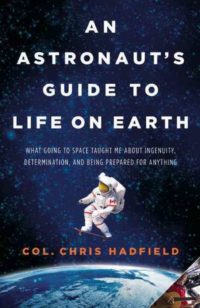RELEVANCE: 3/5
WRITING STYLE: 3/5
ENTERTAINMENT QUOTIENT: 3/5
1969 is a landmark year in world history. It is the year in which Neil Armstrong landed on the moon.
This brought astronauts into the limelight; Star Wars, released 8 years later, certainly helped.
Since then, most of us, at one point or other in our life must have dreamt of becoming an astronaut; wearing spacesuits, walking in space, going to the moon would have seemed achievable and easy.
But again, like so many other childhood fantasies, we put this in the back burner and forgot about it, or realised its impracticality, and ended up being engineers, doctors, accountant, lawyers – stuck on earth.
[perfectpullquote align=”left” cite=”” link=”” color=”” class=”” size=””]“Preparation is not only about managing external risks, but about limiting the likelihood that you’ll unwittingly add to them. When you’re the author of your own fate, you don’t want to write a tragedy. Aside from anything else, the possibility of a sequel is non-existent.”[/perfectpullquote]Chris Hadfield, a nine-year-old in 1969, was one of the millions of people who watched Armstrong’s landing on the moon, and like many of us would at the age, decided to become an astronaut.
But even at that age, he realised the hard work he’d have to put in, and the hurdles he’d have to overcome to become an astronaut; the biggest of them was that he was a Canadian and Canada didn’t have a space agency.
Most of the Apollo-era astronauts were fighter pilots and test pilots; he too decided to become one.
He joined Air Cadets, got a glider license at 15, started flying planes at 16, and enrolled in military college to become a fighter pilot. Good fortune followed and he was selected to go to the US Air Force Test Pilot School.
After many similar minor stints, with his sheer determination, hard work and endless effort, he ended up as an astronaut for the Canadian Space Agency.
His life is an example that we can achieve anything if we are focused on the goal, and work towards realising it; take small steps towards your target, utilise any opportunity that comes your way, and work hard and work smart.
An Astronaut’s Guide to Life on Earth also busts many myths about an astronaut’s profession and work.
No matter how much we would like to believe, going to space and spacewalking there, as shown in the mainstream cinema, is not the only job of an astronaut; his daily routine is filled with classes, tests, simulations, mock drills, etc.
One has to be skilled in many different things from rocket science to plumbing, and from geology to basic surgery. Before each space travel, an astronaut has to undergo years of training to prepare for any eventualities while in space. It is not an easy job as we imagine.
Hadfield also writes about the experience any astronaut undergoes while in space; the view of earth from space, walking in the vacuum, floating inside the vessel are amazing experiences which are worth the effort that is put into preparing for all of this.
Many other important events are touched upon in the book – the Columbia disaster, the installation of the international space station, the relation between American astronauts and their Russian counterparts, etc.
An Astronaut’s Guide to Life on Earth is one of a kind book, written by an astronaut, which gives a peek into their daily lives and struggles; definitely worth reading.
